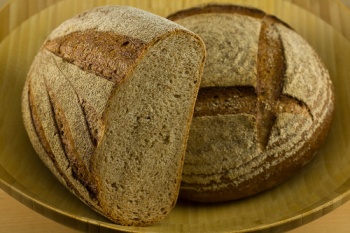Sourdough
From Wikiwel
Sourdough is a bread product made by a long fermentation of dough using naturally occurring lactobacilli and yeasts. In comparison with breads made quickly with cultivated yeast, it usually has a mildly sour taste because of the lactic acid produced by the lactobacilli.
See also :
Special Precautions of Sourdough
Benefits and uses of Sourdough are
- Up until the development of commercial baking yeast in the 1850s, all bread was fermented with naturally occurring yeasts found in the air and on the surface of grains. With modern bread making, we have sacrificed well-being for convenience - leading to a sharp rise in gluten intolerance and digestive disorders, while tooth and bone issues are becoming far too common.
- More digestible than standard bread and more nutritious too : The lactic acid bacteria produce an enzyme called phytase, which effectively ‘pre-digests’ the phytic acid during the extended fermentation. This partially neutralises the effects of the phytic acid and makes the bread easy for us to digest. Lactic acids make the vitamins and minerals in the flour more available to the body by helping neutralise the phytates in flour that would interfere with their absorption.
- The acids slow down the rate at which glucose is released into the blood-stream and lower the bread's glycaemic index (GI), so it doesn't cause undesirable spikes in insulin.
- They also render the gluten in flour more digestible and less likely to cause food intolerance.
References
https://sustainablefoodtrust.org/articles/sourdough-and-digestibility/
